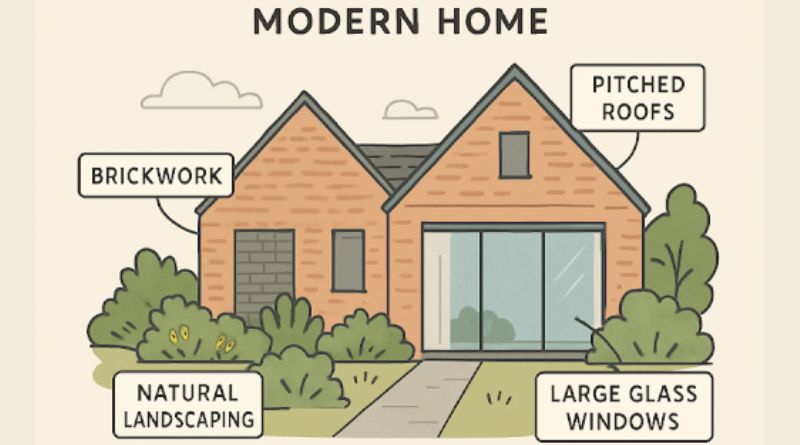Innovative Trends in Contemporary Residential Architecture
Introduction
The landscape of contemporary residential architecture is evolving at a remarkable pace, shaping new ways for people to experience home. Today’s homeowners and architects prioritize not only aesthetic appeal but also practicality, environmental responsiveness, and dynamic living arrangements. At the forefront of this movement are studios like Arch 11, which continue to challenge conventions with inventive designs that reflect a seamless dialogue between tradition and modernity.
Fusing inspiration from diverse eras and cultures, new residential architecture celebrates individuality, comfort, and meaningful connections between people and their environments. At the core of these design philosophies is the commitment to blend style with function—ensuring every element serves a purpose while enhancing the character of a space. Whether it’s through sustainability, smart technology, or adaptable layouts, contemporary homes are being shaped by a strong focus on both well-being and innovation.
This modern approach acknowledges the homeowner’s desire for uniqueness, nostalgia, and connection, resulting in environments tailored to accommodate changing lifestyles over time. For architects and residents alike, the goal is to create homes that resonate emotionally, feel enduringly comfortable, and adapt effortlessly to life’s many phases.
In the following sections, we’ll explore how leading trends—from blended aesthetics and thoughtful sustainability to versatile interiors—are influencing the design and construction of today’s residential spaces, with insights drawn from industry pioneers and global resources.
Blending Traditional and Modern Styles
One of the most distinctive movements in contemporary residential architecture is the embrace of transitional style—a thoughtful fusion of classical elements with sleek, modern forms. Neutral color schemes, layered with varied textures and materials, help create cozy yet sophisticated interiors. Homeowners are seeking comfort in familiar architectural details, such as crown molding or wainscoting, which are now often presented in more streamlined and subtle ways.
This blend of old and new is more than an aesthetic preference—it’s a reflection of personal identity, cultural memory, and a desire for authenticity within a modern context. Architectural details can act as bridges between generations, making new homes feel both timeless and contemporary. Open layouts, large windows, and mixed finishes breathe freshness into designs rooted in tradition, ensuring spaces are as functional as they are visually appealing.
Emphasis on Sustainability
Sustainability remains a driving force for architects and builders. An increasing number of homeowners are opting to remodel or repurpose existing buildings, reducing both environmental impact and construction waste. High-performance, low-maintenance materials(ranging from recycled steel to sustainable hardwoods) are widely used in façades and landscaping.
Additionally, strategies such as LEED certification, Passive House construction, and Net-Zero energy systems are becoming standards in new builds. These approaches lower operational costs, resource use, and the carbon footprint of a home, further aligning contemporary design with a commitment to the planet. According to the New York Times report on home energy sustainability, investments in green systems not only make homes more efficient but also boost their long-term value.
Integration of Smart Technology
Smart technology is transforming the way residents interact with their living spaces. Voice-controlled devices, smart thermostats, integrated lighting, and automated security systems are now frequently woven into home designs from the outset. Built-in sensors monitor air quality, temperature, and humidity, ensuring healthy and comfortable interior environments at all times.
This sophisticated connectivity supports convenience, efficiency, and peace of mind, making homes intuitive and adaptable to busy modern lives. With advancements in smart technologies, contemporary architecture also considers cybersecurity and privacy measures—making sure that increased connectivity doesn’t compromise security.
Designing for Longevity and Adaptability
Longevity and adaptability are increasingly critical in residential design. Modern homes are purpose-built or renovated to accommodate changing needs throughout a lifetime. Ground-floor master suites, accessible bathrooms, wider doorways, and open-plan spaces make it easier for families to adapt as they expand or age.
Thoughtful layouts permit easy reconfiguration, enabling rooms to serve multiple functions. Aging in place is a priority for many, so accessible design elements are incorporated not only for today’s comfort but to ensure long-term usability and independence.
Maximizing Space with Versatile Interiors
Contemporary homeowners are increasingly favoring flexible, multipurpose interiors that cater to a diverse range of activities. Modular furniture and movable partitions allow open-plan environments to be quickly transformed from a workspace to an entertainment hub or a quiet retreat. Libraries, home theaters, and fitness studios often now share integrated or convertible spaces, reflecting the growing trend toward hybrid living.
Innovative spatial planning not only makes homes more efficient but also fosters social connections, allowing for larger gatherings or quiet, reflective spaces as needed. Versatility is key to maximizing every square foot, especially as urban homes become increasingly compact.
Embracing Warm Colors and Natural Materials
Shifting from stark minimalism, today’s interiors are embracing inviting palettes and organic textures. Warm tones—such as rich reds, ochres, and earthy neutrals—create a welcoming and serene atmosphere. Natural materials such as wood, stone, and unbleached linen bring tactile richness and visual interest to spaces while reinforcing a sense of harmony with nature.
Quality craftsmanship and understated luxury are prioritized, ensuring that interiors feel both enduring and restful. These organic elements make the contemporary home a place of relaxation and calm, a true sanctuary from the world outside.
Conclusion
Contemporary residential architecture represents a vibrant intersection of creativity, heritage, and innovation. By blending traditional and modern styles, emphasizing sustainability, integrating smart technologies, and creating flexible, inviting spaces, today’s architects are redefining what it means to build and live in a modern home. As these trends continue to evolve, the focus remains firmly on crafting environments that are not only beautiful but deeply responsive to the lives they shelter.



